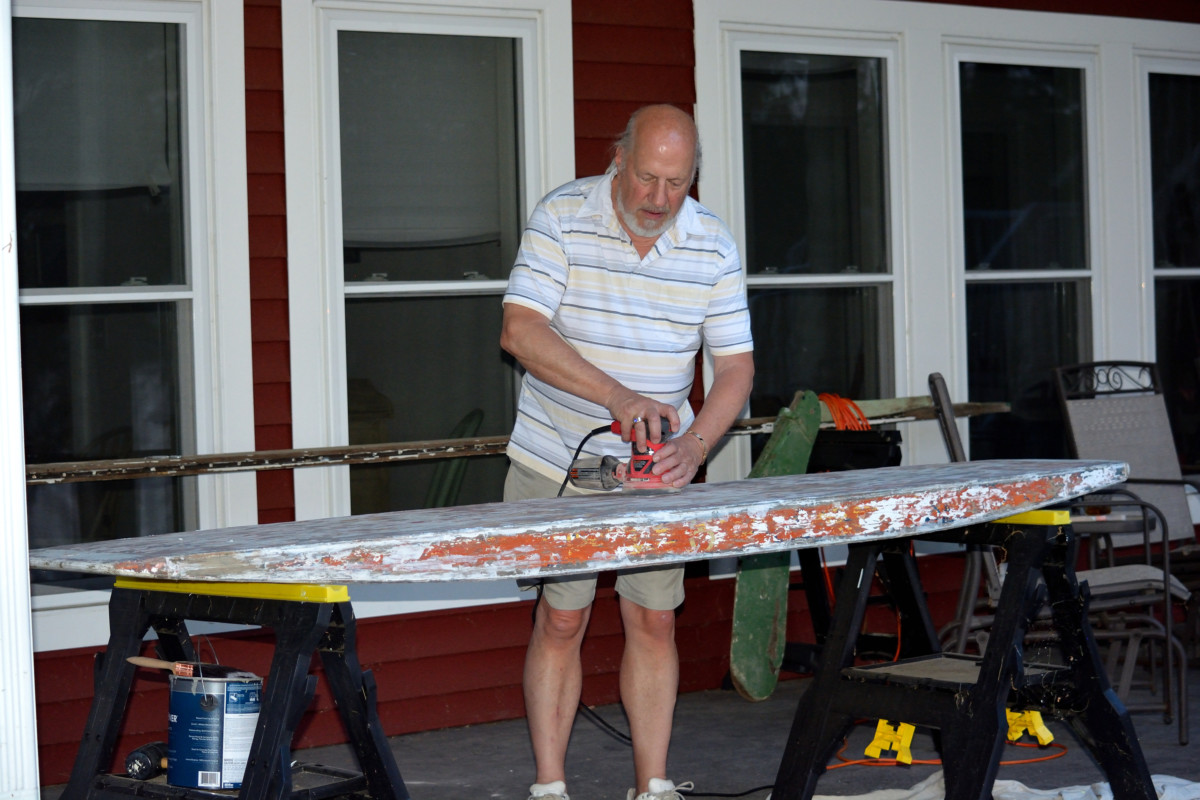In November 2012, we began the tear down of our cottage at 1032 Eagle Point Road. It wasn’t that we wanted to do, but time had passed its sentence.
When I was a teenager, I spent one summer digging out a boat storage area underneath the cottage. As we were built into the hill, I was able to work under the front porch, and moved enough dirt to have a three-foot high crawl space under the porch and portions of the living room. Here we were able to store two boats, lake toys and other associated summer objects. It seemed a great idea at the time, but one thing led to another over the ensuing years, and that project eventually sounded the death-knell for the pre-1910 structure.
In the 1980’s we noticed that the oak pilings supporting the SE corner of the house, now exposed to air and humidity, were rotting away, so we had a cement block foundation built to support the south half of the cottage. The north half, including a bedroom that had been added as a lean-to structure in the 1930’s, was left sitting directly on the ground. At the time, no one saw this as a problem.
However, in 2009, we noticed that the fireplace chimney was pulling away from the cottage. Closer inspection found some cracking in the brick-work about six-feet up from the ground. When someone got up on a ladder to examine the roofline we were told “the only thing holding this chimney to the house is the roof tar.” Thus the chimney was taken down before it came down on its own, probably landing on our neighbors porch.
A few years later, it became apparent that the lean-to bedroom was pulling away from the main house. There was now a ten-inch gap between it’s roofline and the north side of the house – a perfect invitation to red squirrels to set up winter housekeeping. It now appears that by shoring up the south side of the house and inadvertently letting the north side settle with the seasons, we began to pull the house apart. Thus the old place had to come down.
While cleaning out the under-porch boat storage before the tear down, we discovered an old wooden paddleboard. It was the last of three wooden paddleboards we had in the old days and, at 8 ½- feet in length, it was the shortest. It had lived under the house for so long, probably over 50 years, that it was in pretty bad shape. The drain hole had been opened by the sharp teeth of mice looking for a shelter inside, the edge in the dirt was suffering from some dry rot, most of the nails were trying to pull, and the seams needed a lot of good caulk.
The whole family had a lot of fun on these paddleboards in the late 50’s and early 60’s. Mom and my sisters would sun themselves on them, floating in the cool lake waters. Sometimes we would venture afar, and paddle around the lake. It was not very long before we were all testing our balance by standing up and heading out, propelled by an old canoe paddle. I fished off of one from time to time, went turtle hunting from one, and can even recall, on a day of strong west winds, paddling to the head of the lake and then trying to sail back with a beach towel tied to my paddle as a sail. As I recall, it worked, but wasn’t very exciting.
This year, with all of the interest in the new foam or blow-up, stand-up paddleboards, I decided to see if I could resurrect that old relic, at least as a conversation piece. Once I started sanding the surfaces, in preparation to fixing the nail holes and caulking the seams, I discovered six coats of different colored paint. Working from the wood outward, the first colors appeared to be a medium blue, followed by yellow. This led me to believe that Dad might have obtained this one from his cousin Wayne Shawaker. Wayne was a staunch Michigan fan. He even painted his dock in alternating boards of blue and maize. As a small boy, I can remember simulating a game of hopscotch on the yellow boards rather than stepping on the sun-heated blue ones and singeing our feet.
The next color was a rust red, probably painted to match the color we painted the cottage in about 1958, and after that a dark red which was the color of the aluminum siding we put on a few years later. It was obvious that the dark red made it too hot to use. I can remember having to let it soak, upside down, in the water before I could get on it. Thereafter, it was painted a light pink for less heat. Finally came the white that is the color most of us remember.
The photograph shows the initial sanding in which you can see remnants of all those old colors. There will be much more sanding, caulking, sealing and repainting to come. Hopefully you can see the end product leaning against my garage in the near future. Another great memory of how we played in the lake in the days before iPads.












